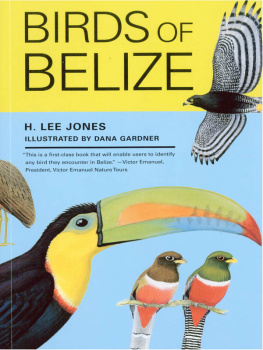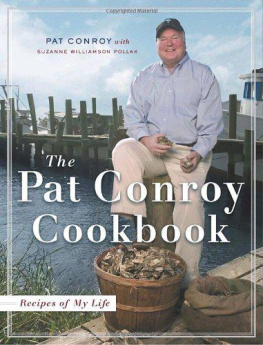Contents
Guide

The author and publisher have provided this e-book to you for your personal use only. You may not make this e-book publicly available in any way. Copyright infringement is against the law. If you believe the copy of this e-book you are reading infringes on the authors copyright, please notify the publisher at: us.macmillanusa.com/piracy.
Contents
This book is dedicated to my St. Martins editor, Ruth Cavin, who made the mistake, during a long luncheon at Washingtons Hotel Madison some years ago, of laughing in all the right places when I told her my Belize stories.
At any time in the past third of a century that there has been a lull in the conversation, I have been impelled to fill it by telling Belize stories. Not much I can do about it; they just come tumbling out.
Belize stories have, in fact, taken on a life of their own. I no longer quite know what is true and what is invention. And my wife is of little help in this matter.
For example, the Real American Cake affairI remember it as being a dinner party when the obeah woman blew up the consulate oven. My wife swears it was a cocktail party. Shes wrong and Im right. Maybe.
And the things I remember my wife sayingI can hear her even nowbut she insists she would never have said anything like that. Is it because she is a reporter and is used to editing her copy? Or do I just put words in her mouth? Like a husband.
Anyway, this all beganthis book, I meanas an attempt to get it all down before I lose the feel, the taste, and yes, the smells of Belize, as they were before, during, and just after the great hurricane of 1961.
Because nothing ever quite stands alone, I have put Belize in context, to explain how it was that we got sent to this place rather than to some fast-track assignment for success in the Foreign Service.
To do this, I have found it necessary to include my initial mind-numbing assignment in Washington and before that, my stillborn career making hydrogen bombs. A life progressing from the obscene to the ridiculous.
About Oak Ridgethat is, chapter 2an explanation is probably needed before the reader dives into the book. In the first place, there was never any real danger of what went on there starting World War III, not right there at any rate, no more than if somebody flew his Piper Cub into restricted airspace unexpectedly. And I can say with perfect confidence that if anybody had accidentally set off a nuclear explosion, it would not have been at Oak Ridge, or at least not at the Y-12 plant where I worked.
Apart from that, inside the plant this crazy chemical process was being run by some people whod never done anything like that before, myself included. People in New York who looked at the manuscript of my book prior to publication found my account of life in the H-bomb plant unsettling. They looked at me suspiciously. Why wasnt I appalled? Or was I trying to write farce instead of a memoir? What are you up to, Conroy?
Well, the truth is, I was just telling it the best I could, and as for being scared, it was to get the hell outta there that made me look around for something else to do. Thats really what thrust me into diplomatic life. And that was how it was that I learned that, as the French say, plus a change, plus cest la mme chose.
But just to be on the safe sideabout Oak RidgeI sent a copy of my story, in draft, to Frank Booth, my old Oak Ridge general foreman. He worked there many years and retired relatively unscathed. Then I called him up for his reaction. Frank, I asked, did I tell it wrong? Yes, he said, the scrubber columns were not sixty-foot; they were more like fifty. The ceiling was sixty and there had to be room for a crane. So I took off ten feet. But you left out some of the other things that went on, he said. Then he told me about the time somebody tied two huge Mylar balloons together, filled them with hydrogen, and floated them up under the main 161-kV electric power supply to the Y-12 plant complex. They stuck there like oversize water wings while everybody got nervous about what they might do. Bring down the power line in the wind? Who could say? Eventually, they shot the balloons down. Oak Ridge in those days, he explained, brought together a lot of people. Some were so dumb they didnt understand anything, and others were so smart they knew too much.
But back to the book as a whole. I have changed peoples names, all but my own. To allow even my wife and daughters the privilege of denial, they are simply identified according to kinship. I considered changing my own name, but somebody has to take responsibility for writing this book. The publishing business is probably not ready for another Anonymous. Why all this cover-up? It seems the only fair thing to do, since the veracity of my memory is highly suspect and given my propensity for putting words in other peoples mouths and even, now and then, putting misdeeds on other peoples consciences. Did they really do that? Or was it I? Did it happen just that way?
So, any of you who claim to be actors in this book may deny any part of it (except maybe for what went on in Oak Ridge, where I checked it out), and I will support your contention. You probably remember what went on better than I. Perhaps you were sober at the time. But keep things in perspective. Bear in mind that even I, who drew this assignment from hell, and who put everything down in this book, do not come out of it scot-free. Hmmmmaybe I should have given more thought to putting a spin
Finally, during those hectic days in Belize recounted here, I may not have adequately expressed my appreciation for the way my wife, Sarah, and our two daughters, Camille and Claire (here properly identified), bore up under hard times without complaint. I do so now. Camille, the once three-year-old, did try to run away and join the circus in Belize, but shes been forgiven for that long ago.
There I was, waist deep in mud, holding my machete up out of it for no good reason at all, and moving first one foot and then the other. I looked down. I was making slight waves in the mud, not quite like what beaters make in whipped cream when its ready, but more like heavy cream before it begins to thicken.
Except that it was gray. Dark, neutral gray without any blue or brown in it. Sewage gray. Sewage, thats what it was. I wiggled my toes. Partly it was so I could find out whether my toes were still attached, but mainly to see if the mud had penetrated my yellow boots. It had.
My foot hit something. I sensed, or thought I sensed, a piece of corrugated metal roofing down deep in the opaque mud. Zincs, they called them because they were galvanized, and they could just about cut you in two if they had a good wind behind them. Wind that there had been plenty of during the long night that had just passed. I plodded on. Carefully.
Now something clung to my shoe, the left one, and I couldnt move that leg forward anymore. It felt like something or someone had ahold of my foot. Impossible. Something, maybe, but not someone. I put my weight on that leg and moved the other one up, exploring with my steel-capped toe. A nail, thats what it had to be. I had stepped on a nail and I was now attached, you might say nailed, to a piece of wreckage. I got my free foot up on it, whatever it was, then shifted my weight, raising the other foot. It held at first, then it came away, free. Free, but maybe now I had tetanus or was on my way to septicemia or something awful like gangrene. I took a last look at my left leg before they had to cut it off to save my life. It didnt do any good; I couldnt see anything below my waist. Not for the mud.










